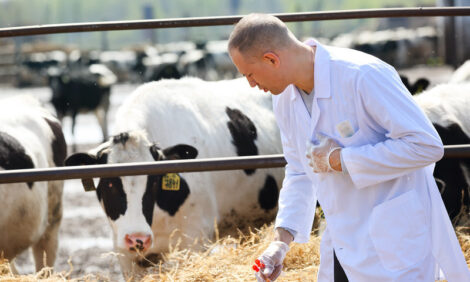



Survey of Visitors on Swedish Livestock Farms with Reference to the Spread of Animal Diseases
From a survey of Swedish livestock farms, it was revealed that the average number of professional and non-professional visitors per day was 0.3 and 0.8, respectively. The number of visits was affected by herd size, farm type and season, which has implications for farm biosecurity and the potential for the spread of diseases.In addition to livestock movements, other between-farm contacts such as visitors may contribute to the spread of contagious animal diseases.
In a paper in BMC Veterinary Reseach, Maria Nöremark of Sweden's National Veterinary Institute and co-authors there and at the Swedish University of Agricultural Sciences say that knowledge about such contacts is essential for contingency planning. Preventive measures, risk-based surveillance and contact tracing may be facilitated if the frequency and type of between-farm contacts can be assessed for different types of farms.
The aim of their study was to investigate the frequency and types of visitors on farms with cloven-hoofed animals in Sweden and to analyse whether there were differences in the number of visitors attributable to region, season and type of herd. Data were collected from Swedish farmers through contact-logs covering two-week periods during four different seasons. From each region, approximately 200 cattle farmers and 120 pig farmers with different production systems were selected, as well as 40 sheep farmers and 20 goat farmers (not all regions had this many farmers), resulting in a total of 1,498 farmers.
In total, 482 (32 per cent) farmers filled in the contact log for at least one period and the data represent 18,416 days.
The average number of professional and non-professional visitors per day was 0.3 and 0.8, respectively. Whereas the number of professional visitors seemed to increase with increasing herd size, this relation was not seen for non-professional visits. The mean numbers of visitors per day were highest in the summer and in the farm category ‘small mixed farm’.
Reports of the visitors’ degree of contact with the animals showed that veterinarians, AI technicians, animal transporters and neighbours were often in direct contact with the animals or entered the animal houses and 8.8 per cent of the repairmen were also in direct contact with animals, which was unexpected.
In a multivariable analysis, species, herd size and season were significantly associated with the number of professional visitors as well as the number of visitors in direct contact with the animals.
Nöremark and co-authors concluded that there was a large variation between farms in the number and type of contacts. The number of visitors that may be more likely to spread diseases between farms was associated with animal species and herd size.
Reference
Nöremark, M., J. Frössling and S. Sternberg Lewerin. 2013. A survey of visitors on Swedish livestock farms with reference to the spread of animal diseases. BMC Veterinary Research. 9:184. doi:10.1186/1746-6148-9-184
October 2013


